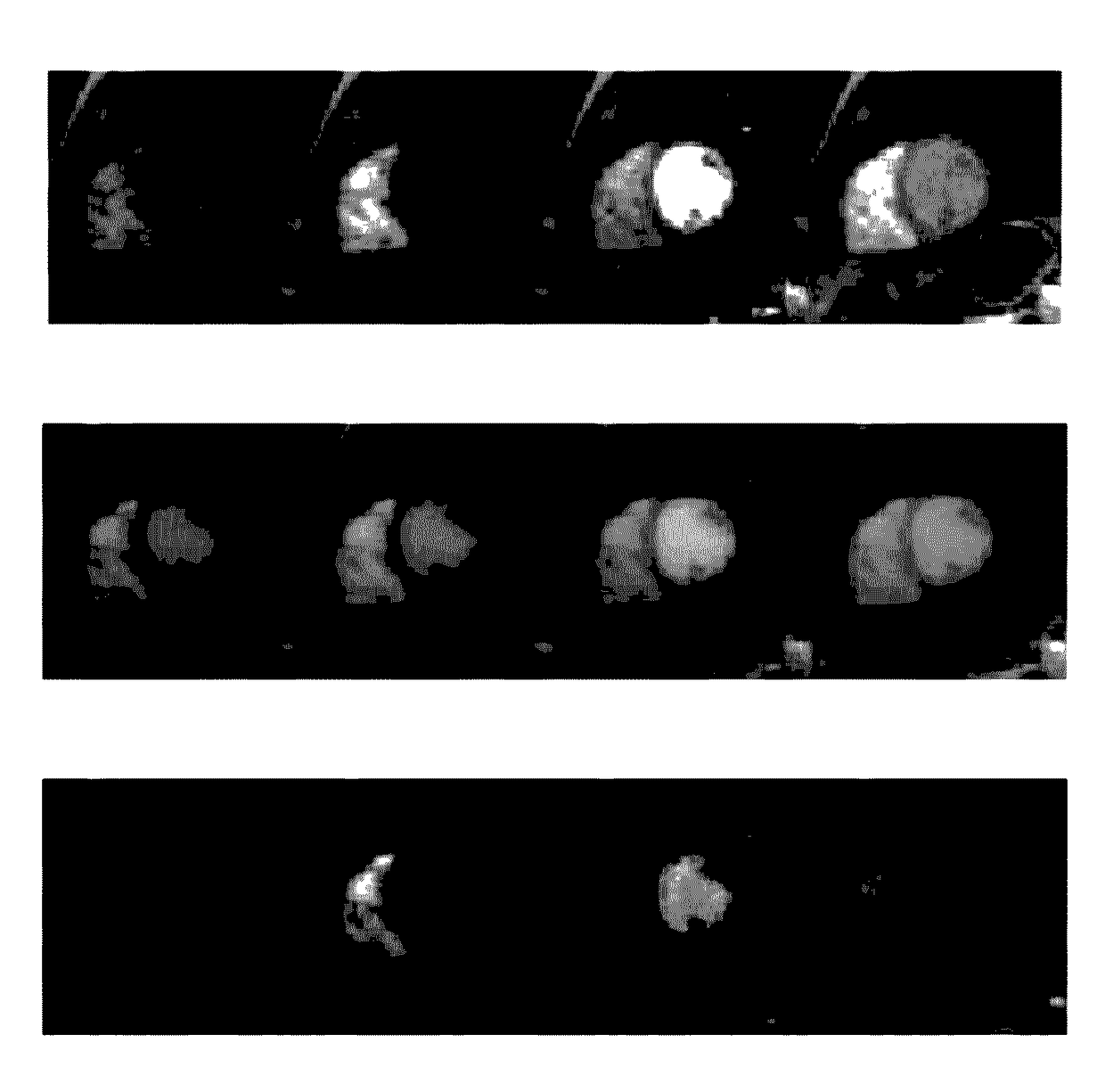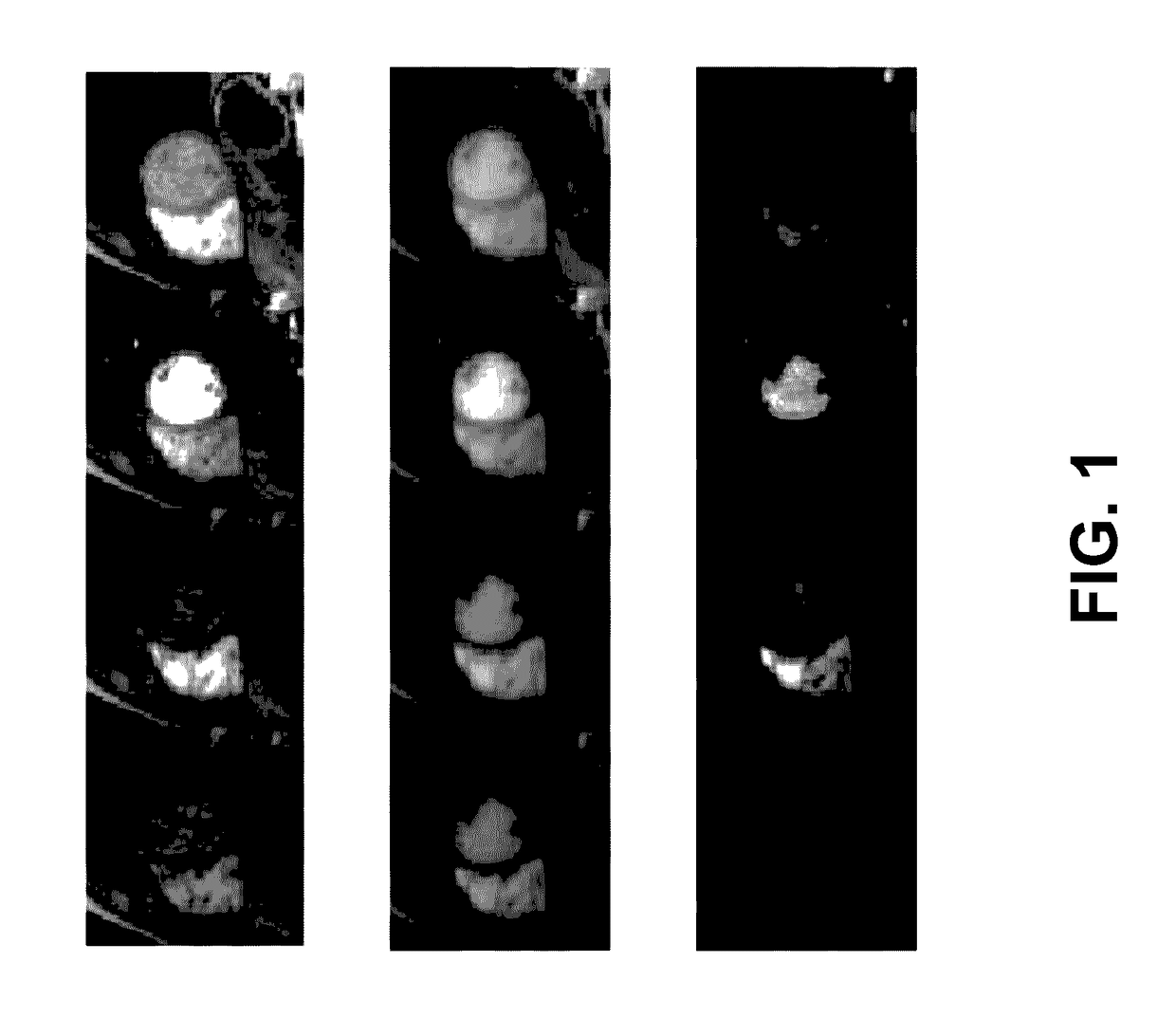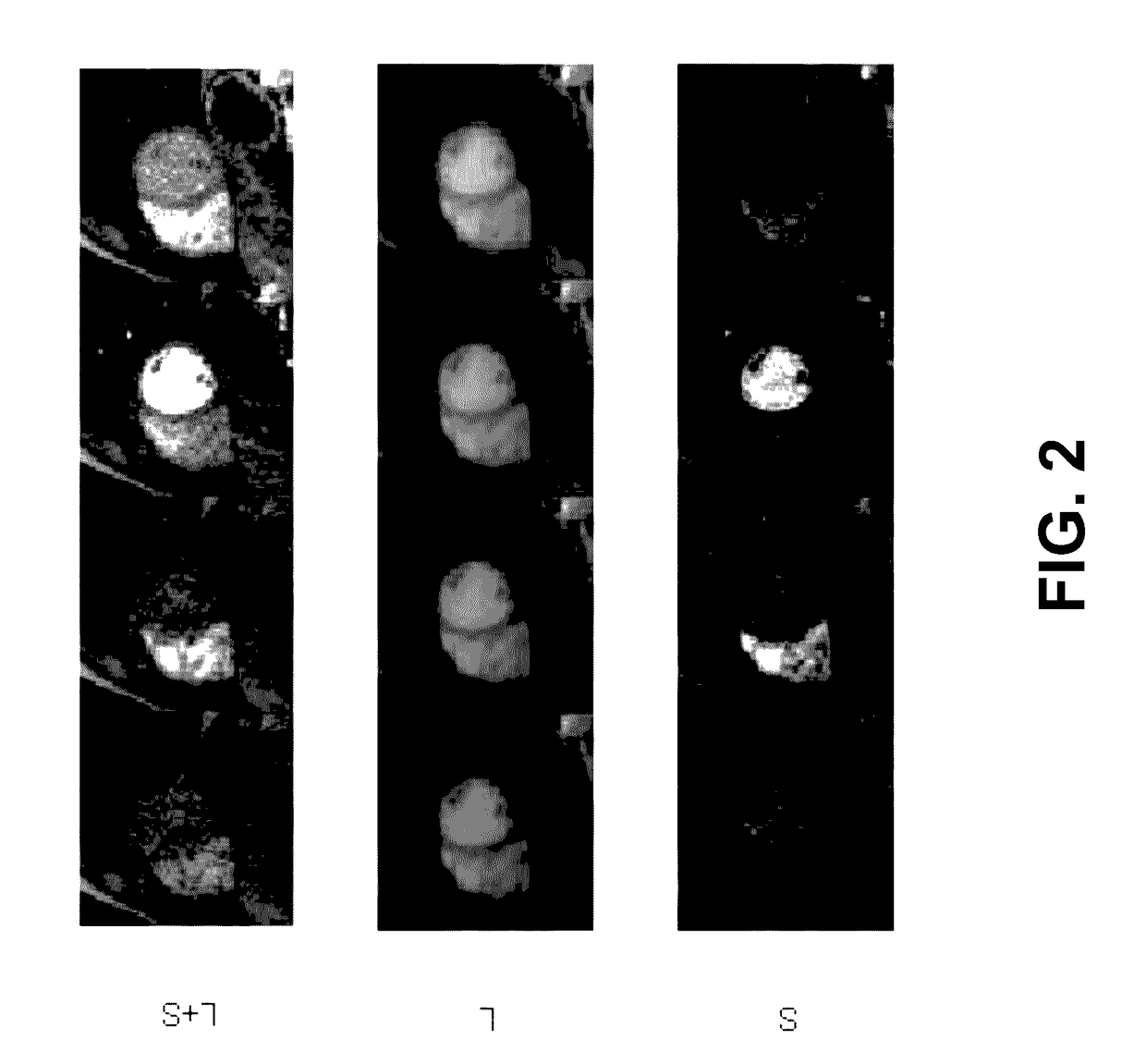Low-Rank and Sparse Matrix Decomposition Based on Schatten p=1/2 and L1/2 Regularizations for Separation of Background and Dynamic Components for Dynamic MRI
a dynamic mri and sparse matrix technology, applied in image enhancement, instruments, applications, etc., can solve the problem that the existing dynamic mri imaging techniques cannot reduce the scan time to a satisfactory level
- Summary
- Abstract
- Description
- Claims
- Application Information
AI Technical Summary
Benefits of technology
Problems solved by technology
Method used
Image
Examples
Embodiment Construction
[0058]Traditionally, the L+S matrix decomposition has been performed by transforming the decomposition problem into a convex optimization problem of minimizing a nuclear-norm (viz., a sum of singular values) of a low-rank section of the matrix and an L1-norm (namely, a sum of absolute values) of a sparse section of the matrix subject to data consistency constraints [24]. Different from the traditional approach, herein in the present invention, an S1 / 2-norm and an L1 / 2-norm are used to replace the nuclear-norm and the L1-norm, respectively, for improving the performance of the L+S matrix decomposition.
[0059]The technique developed by the aforementioned improved approach was tested in experiments. To guarantee fairness and effectiveness in the experiments, several sets of data of dynamic MRI experiments from [16] were used, where joint multi-coil reconstruction was used for Cartesian and non-Cartesian k-space sampling. As will be shown, experimental results demonstrate the superiority...
PUM
 Login to View More
Login to View More Abstract
Description
Claims
Application Information
 Login to View More
Login to View More - R&D
- Intellectual Property
- Life Sciences
- Materials
- Tech Scout
- Unparalleled Data Quality
- Higher Quality Content
- 60% Fewer Hallucinations
Browse by: Latest US Patents, China's latest patents, Technical Efficacy Thesaurus, Application Domain, Technology Topic, Popular Technical Reports.
© 2025 PatSnap. All rights reserved.Legal|Privacy policy|Modern Slavery Act Transparency Statement|Sitemap|About US| Contact US: help@patsnap.com



